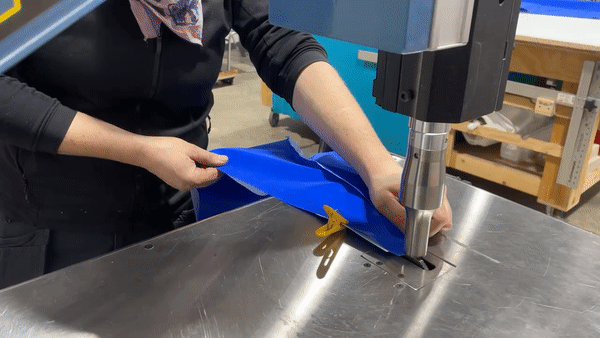Implementing a batch process requires a sliding piston or a flexible bladder. We have chosen to use bladders because they are well known to the water industry. Our bladder see lower differential pressures (~7 psi) than the ones used in pressure tanks.
 Our tube-mounted bladder fits into existing RO pressure vessels.
Our tube-mounted bladder fits into existing RO pressure vessels.
Although not typically used in RO processes, the bladder offers several advantages compared to energy recovery devices.
Simple construction
Low material cost
Field repairable
Our systems do not require energy recovery devices because the brine volume of the batch is not pressurized. There is simply no energy to recover!
The bladder also allows us to use cheaper materials (i.e. brass) for the pressure pump, since it is no longer in contact with the corrosive feedwater.
The bladder provides improved energy-efficiency and scaling resistance compared to semi-batch RO because mixing between feed and brine is eliminated.
Bladder leaks are not catastrophic. System performance is somewhere in between batch and semi-batch RO, depending on the size of the leak.
Over the years we have tried various materials, manufacturing techniques, and designs. In a pinch, we have even used the inner tube of a truck tire!
 Cast silicone bladder deflation (4x speed)
Cast silicone bladder deflation (4x speed)  Plastic-coated fabric, installed
Plastic-coated fabric, installed  Early template design
Early template design  Ultrasonic welding
Ultrasonic welding
Having refined our bladder design, we are connecting with contract manufacturers with the ability to permanently bond rubber pieces in various sizes.